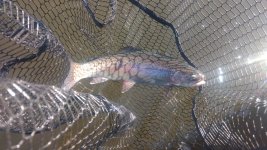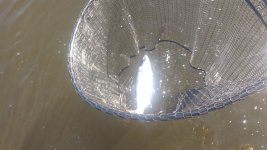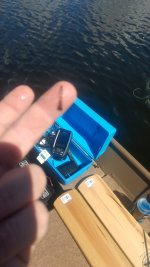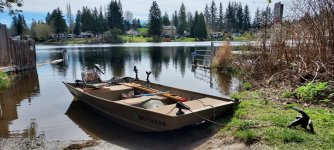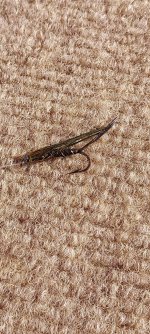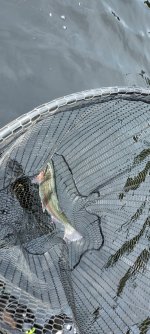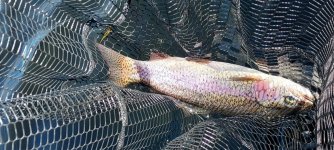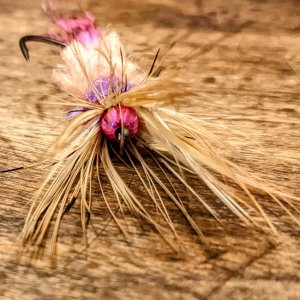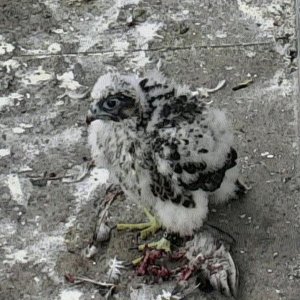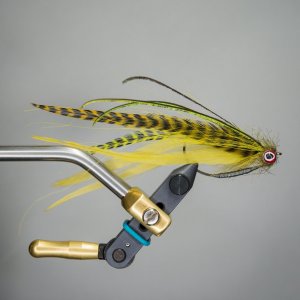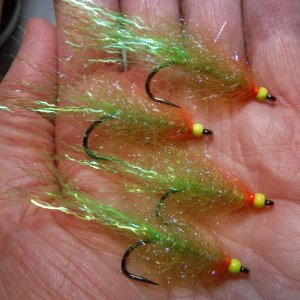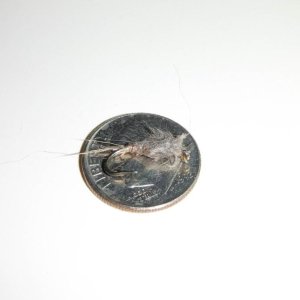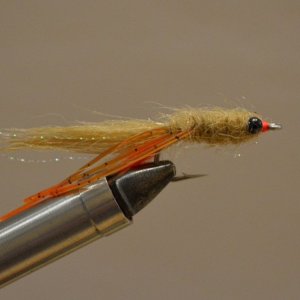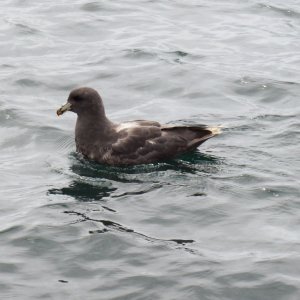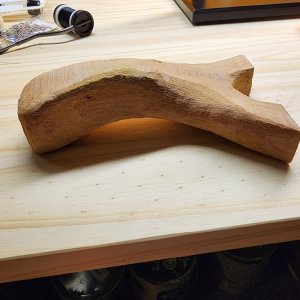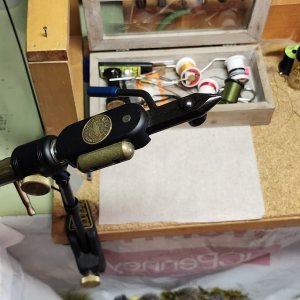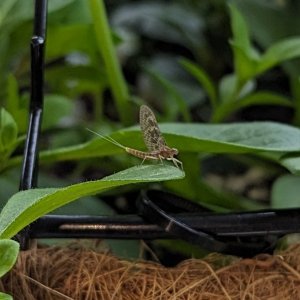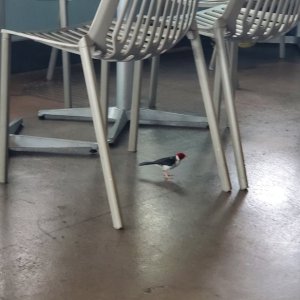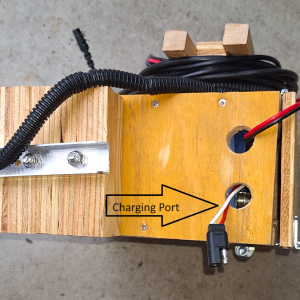Hit Martha again bloom in full swing, it was moving around ? Is it turning, not heard of this till this spring. Anyway I went 2 for 3 on my cronimids. Happy times, 14" on the nose.
You are using an out of date browser. It may not display this or other websites correctly.
You should upgrade or use an alternative browser.
You should upgrade or use an alternative browser.
Time to get a pair of kevlar waders for float tubing!Took a look, what's this ?
Yep. People are dumb.interesting, I don’t know of a waterway that connects Washington waters with native northern pike population. Therefore, a “bucket biologist” must have said to him or herself, “Self, big northern pike would be a great addition to this lake, river, pond. I think I’ll put some in. We love them in Michigan, Montana, Wisconsin…”.
Such incredible stupidity. There in lies the introduction of lake trout into Yellowstone National Park waters and others.
Now, locally, birds can spread species as well. For example, a gull, heron or osprey picks up a pike in the Columbia above Grand Coulee and then drops it on the other side. If that little dude survives, now we have at least 1 pike in that part of the river. If he gets really lucky and a couple females get dropped as well, then we have little pike families.
And then the same thing happens below Wells dam. So then we would have pike in an anadromous salmon & steelhead system. Do they eat more baby salmon & steelhead than our native pike minnow? Or the introduced walleye, bass and carp?
Alaska has the same problem. Interesting info from the article below-
Pike are very tough critters. Under the right conditions, pike can live up to 13 hours out of the water, and can survive even torn gills. Pike can travel 50 miles or more in search of new food sources.
Here's the article from 2004- https://www.adfg.alaska.gov/index.cfm?adfg=wildlifenews.view_article&articles_id=50
Here's one from 2014- https://www.fishsens.com/invasive-p...once-thriving-alaskan-chinook-salmon-fishery/
Uptonogood
PNW raised
I haven’t seen documentation of birds introducing non native fish, particularly predators like pike. I someone has one, please,post it.Yep. People are dumb.
Now, locally, birds can spread species as well. For example, a gull, heron or osprey picks up a pike in the Columbia above Grand Coulee and then drops it on the other side. If that little dude survives, now we have at least 1 pike in that part of the river. If he gets really lucky and a couple females get dropped as well, then we have little pike families.
And then the same thing happens below Wells dam. So then we would have pike in an anadromous salmon & steelhead system. Do they eat more baby salmon & steelhead than our native pike minnow? Or the introduced walleye, bass and carp?
Alaska has the same problem. Interesting info from the article below-
Pike are very tough critters. Under the right conditions, pike can live up to 13 hours out of the water, and can survive even torn gills. Pike can travel 50 miles or more in search of new food sources.
Here's the article from 2004- https://www.adfg.alaska.gov/index.cfm?adfg=wildlifenews.view_article&articles_id=50
Here's one from 2014- https://www.fishsens.com/invasive-p...once-thriving-alaskan-chinook-salmon-fishery/
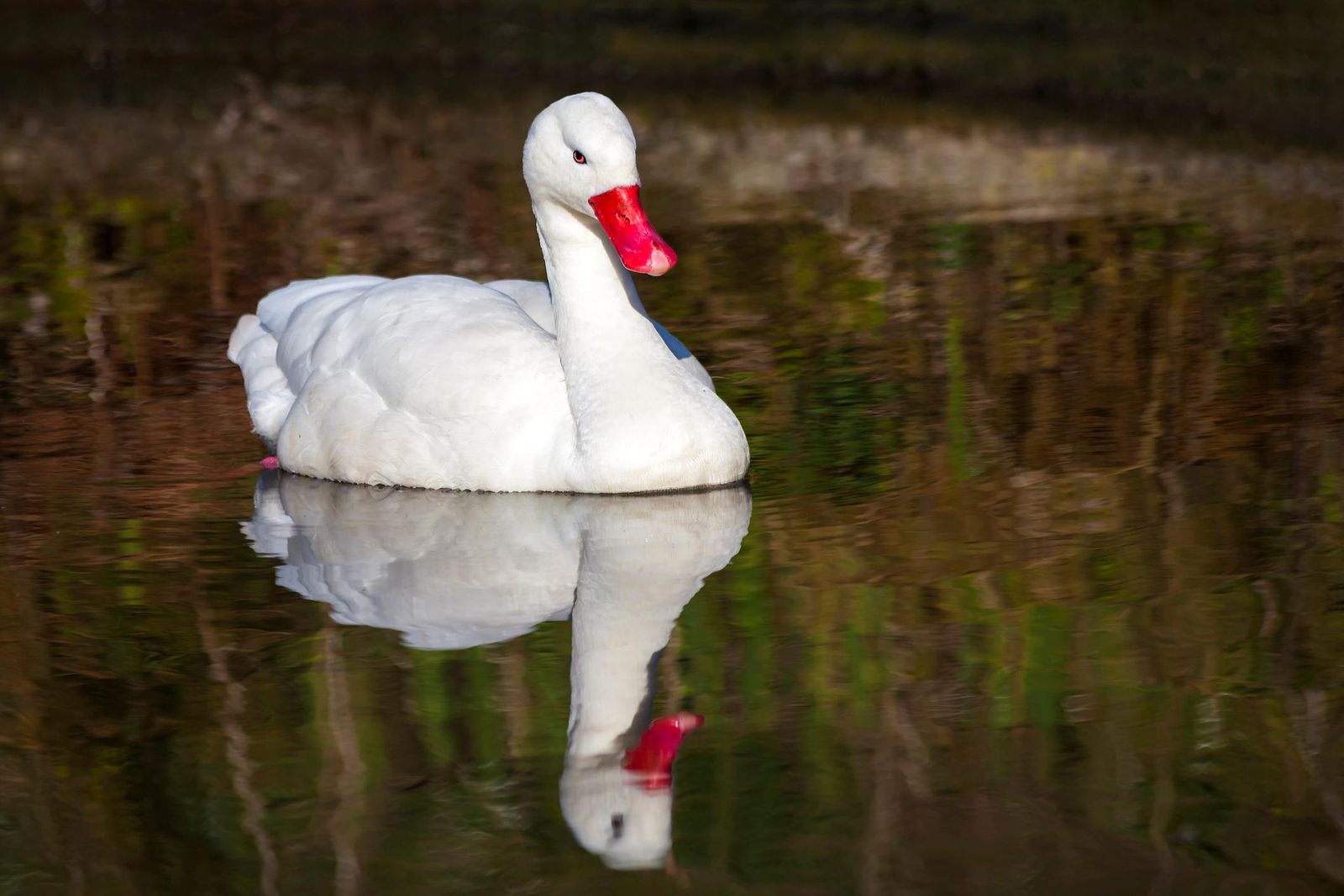
A Swan Swallowed This Fish Egg, Pooped It Out—and Then 49 Days Later, It Hatched
The new study is one of the first to demonstrate fish egg dispersal via avian fecal matter

Fish eggs can hatch after being eaten and pooped out by ducks
In the lab, a few carp eggs survived and even hatched after being pooped out by ducks. The finding may help explain how fish reach isolated waterways.
And this is just the poop it out theory.
Not sure if anyone has studied it but I've personally watched osprey on the Columbia drop multiple shad, bass and panfish.
How thick is Wells Dam? An osprey or eagle can cover that distance in just a few seconds.
I've read a few articles that say most wildlife scientists are so confident in the theory that it doesn't need studied. That's not always a good thing, but usually a sign that the odds are in the favor.
Took a look, what's this ?
Could. It. Be. Time. For. A. Northern Pike. Clave?
Aggression
The northern pike is a relatively aggressive species, especially with regard to feeding. For example, when food sources are scarce, cannibalism develops, starting around five weeks in a small percentage of populations.[16] This cannibalism occurs when the ratio of predator to prey is two to one.[16] One can expect this because when food is scarce, Northern pike fight for survival, such as turning on smaller pike to feed; this is seen in other species such as tiger salamanders. Usually, pike tend to feed on smaller fish, such as the banded killifish. However, when pike exceed 700 mm (28 in) long, they feed on larger fish.[17]Because of cannibalism when food is short, pike suffer a fairly high young mortality rate.[18] Cannibalism is more prevalent in cool summers, as the upcoming pike have slow growth rates in that season and might not be able to reach a size to deter the larger pike. Cannibalism is likely to arise in low growth and low food conditions.[18] Pike do not discriminate siblings well,[citation needed] so cannibalism between siblings is likely.
Aggression also arises from a need for space.[19] Young pike tend to have their food stolen by larger pike.[19] Pike are aggressive if not given enough space because they are territorial.[20] They use a form of foraging known as ambush foraging. Unlike species such as perch, pike undergo bursts of energy instead of actively chasing down prey. As such, a fair amount of inactive time occurs until they find prey. Hunting efficiency decreases with competition;[20] the larger the pike, the larger the area controlled by that particular pike. An inverse relation to vegetation density and pike size exists, which is due to the possibility of cannibalism from the largest pike.[21] This makes sense, as the smaller pike need more vegetation to avoid being eaten. Large pike do not have this worry and can afford the luxury of a large line of sight. They prefer a tree structure habitat.[21]
There has been at least one instance of a pike attacking a dog.[22]
Pike are occasionally preyed upon by otters.[23]
Physical behavioural traits
Pike are capable of "fast start" movements, which are sudden high-energy bursts of unsteady swimming.[24] Many other fish exhibit this movement as well. Most fish use this mechanism to avoid life-threatening situations. For the pike, however, it is a tool used to capture prey from their sedentary positions. They flash out in such bursts and capture their prey. These fast starts terminate when the pike has reached maximum velocity.[24] During such motions, pike make "S" conformations while swimming at high rates. To decelerate, they, simply make a "C" conformation, exponentially slowing down their speed so that they can "stop".[24] An interesting behavioural trait that pike have is that they have short digestion times and long feeding periods.[17] They can undergo many of these fast bursts to collect as much prey as they can. Pike are least active during the night.[20]
Last edited:
No new sign at shoecraft. Some jack ass dumped loads of crap in the parking area and in woods. I reported it to wdfw. There on the hook, not the tribe to clean it up. Sad, last yr cars and crap.
Cheers to WDFW, that garbage is cleaned up.
Had high hopes today, dood came in on paddle board and fly rod, got few on streamers. Had one bobber down popped off. Seen some lips here n there. Small black bugs ? Moved and my battery died ? Old, wind was tough so rapped it up. Costco for a new battery.
Attachments
Last edited:
Mike Bacca
Smolt
But Martha!

